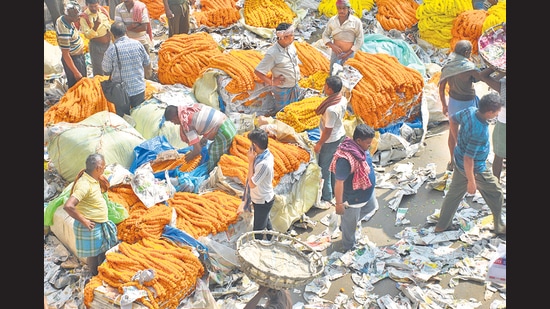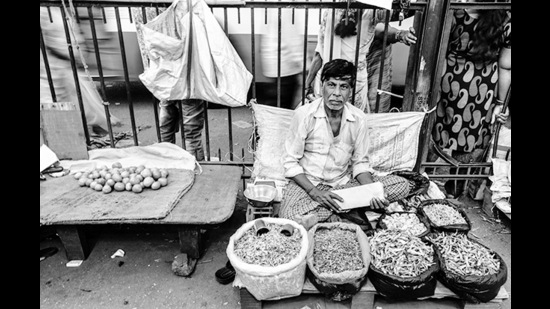This artist is mapping Bengaluru though its unique aromas
Indu Antony began work on Bengaluru Smellscapes in February. Eventually, her project will be represented as a book with a foldout map and perfume pads, so you can take a tour too.
Could a smell be a work of art? Artists have been considering the idea for close to 80 years. In 1938, French artist Marcel Duchamp tried an unusual display at the International Surrealist Exhibition. He placed an electric brazier behind a screen to roast coffee, filling the halls with what he termed, “the smell of Brazil”. Andy Warhol took it even further, leaving behind a Permanent Smell Collection of hundreds of scents when he died in 1987. Each one represented specific period and place in his life, trapping ephemeral memories into fragrance notes.

Indian artists have been experimenting with olfactory work too, drawing on the personal and incommunicable experiences of odours. Artist Indu Antony launched her project, Bengaluru Smellscapes, in February 2020 in an attempt to map the city by its scents. “Bangalore, like any other city or town, has unique smells,” she says. “From the aroma of Suma coffee on CMH road to that of freshly fried samosas in the bylanes of Shivajinagar to sneezing when you smell fresh textiles at Silver Plaza.”
The project involves conducting detailed interviews with people from various parts of the city, including shopkeepers from Chamarajpet, drivers of public transport vehicles, nurses at the Mallya Hospital. Antony has met 200 locals so far. The work, supported by the India Foundation for the Arts, will be published in the form of a book in January.

Antony describes it as a sensorial journey through various parts of the city, a sort of city guide led by smell. “It’s a handmade book with perfume pads,” she says. “It will have a fold out map, so people can walk around and explore Bangalore on their own.” Her own interest in fragrances stems from her curiosity for the invisible dimension of our lives, asking herself if the air that surrounds us is “just abstract nothingness or does it potentially contain information we don’t see”.
This isn’t the first time an Indian city has been covered by nose. In 2018, photographer and writer Gopal MS, better known on social media as Mumbai Paused, published Matsyagandha: Low tide smells from the Island City. His digital photos, shot over a decade, were created by following smells around Mumbai. The images urged viewers to consider how different a city seemed from the one they primarily viewed with their eyes. In Delhi, locals and visitors have been going on guided “smell-walks” though Old Delhi, Khan Market, the Afghan colony of Lajpat Nagar, the Punjabi-settled area of Rajouri Gardens and the Bengali market of CR Park for at least four years.
But tracking smells during a pandemic, when masks restrict how much you can smell, brings a new set of challenges. Antony found that her subjects could recall the smells they used to sense in a particular neighbourhood even when they had their masks on and could no longer smell those notes. “I also came across people who said that a particular church’s gate reminded them of break up by the way it smelled,” Antony says, “This is something unique about the idea of olfaction. It’s very personal and at the same time abstract.”
Catch your daily dose of Fashion, Health, Festivals, Travel, Relationship, Recipe and all the other Latest Lifestyle News on Hindustan Times Website and APPs.
Continue reading with HT Premium Subscription




